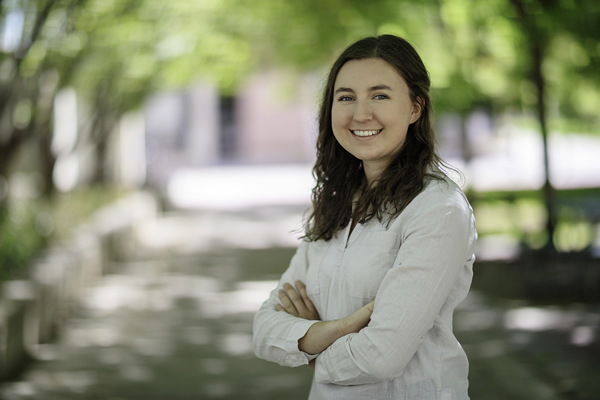Education and Outreach News
August 11, 2017
iUTAH Supports New Green Roof Display on USU Campus
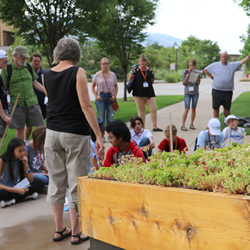
Middle school students and teachers from across the state were the first to see and learn about benefits of green roof construction in urban spaces through a new interactive display on the Utah State University Logan campus. Participants were part of the USU STARS! GEAR UP program, a combined effort of the Colleges of Engineering and Education at USU.
The display, located front of the Quinney College of Natural Resources, measures water runoff from traditional asphalt shingles verses green roof materials. In addition its visual appeal, the green roof portion is covered with a variety of living plants that slow down and cleanse the water runoff during storms. The side-by-side example allows students to see and count water amounts measured as they are coming off each roof. During a simulated rainstorm, the green roof reduced the amount of water running off to a surprising degree.
USU undergraduate student McKenna Drew said that development of the project came out of her experience working with Nancy Mesner, professor in the Department of Watershed Sciences and an Extension Specialist in Water Quality Extension at USU.
Drew said that while “teaching students and educators about ways that they could engage in monitoring water bodies throughout the state of Utah, she saw how effective hands-on activities were for learning.”
“I saw an opportunity to implement this type of learning on campus,” said Drew. “As a Landscape Architecture student, I thought that a green roof demonstration would be a great start to the potential of many more hands-on learning and research opportunities on USU’s main campus,” adding that “I have always had a big interest in green infrastructure and storm water management.”
Drew was assisted in her project by USU faculty mentors, Nancy Mesner, Bo Yang, an associate professor of Landscape Architecture and Environmental Planning, and Mark Brunson, professor in the Department of Environment & Society and iUTAH Education, Outreach and Diversity director, as well as many others. She graduated in May 2017 with a Bachelor of Landscape Architecture, and now works for the Bureau of Land Management in Salt Lake City, UT.
The project was supported financially by iUTAH, a water research and education program funded by the National Science Foundation. The iUTAH project supports green infrastructure education programs on the University of Utah and Southern Utah University campuses, as well as at USU. They have partnered with groups such as Utah Water Watch on this project, and other education outreach signage to strengthen and promote an inclusive, diverse, water-wise community in Utah.
“My hope is that instructors on campus, and throughout Cache Valley, will not shy away from utilizing the display as a teaching opportunity and that people can see how easy it is to implement green infrastructure,” said Drew. “I also hope that this project is a start to seeing more research displayed and monitored on campus, and am thrilled with the result of the display, thanks to the efforts of facilities, colleagues, mentors, and friends."
Press: Utah State Today | The Hearald Journal
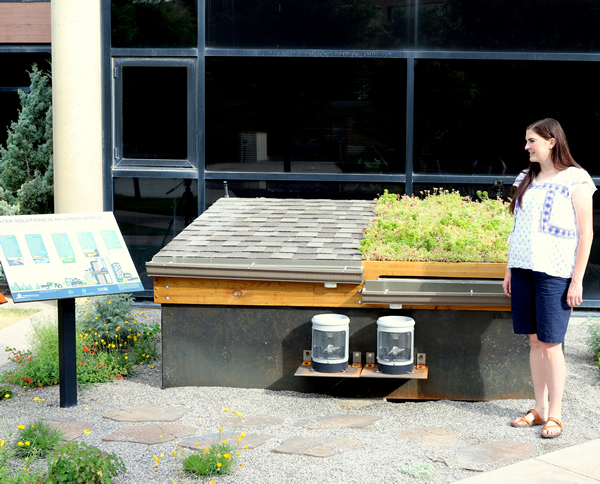
August 8, 2017
Engaging Community in Watershed Education at Utah Lake Festival
“Do you know what a watershed is?” This is the question asked of nearly 800 people by Erin Jones, Dylan Dalstrop, and Scott Collins who together ran an iUTAH/Brigham Young University booth during this year’s Utah Lake Festival, which took place on June 3, at the Utah Lake State Park. Of those asked, only a few people, mostly 4th graders, were able to respond with any kind of coherent answer.
Asking this open-ended question led to a discussion on how a watershed is an area on the landscape where all the water drains to one place. In Utah, Utah Lake is one of these places, with water eventually making its way downstream to the Great Salt Lake. Through use of a hands-on display of a watershed, students were able to simulate a rainstorm by squirting spray bottles over the plastic model, and watch pollution they added flow down into the pretend lake.
After playing with the model, people were given examples of the personal connections they have to local water sources and what individuals and communities can choose to do to improve the water quality in their own landscape. Some of these choices that make a difference include picking up pet waste, not washing vehicles on lawns, and using less fertilizer and pesticides that flow back into Utah’s waterways.
People visiting the booth were then told about iUTAH and shown the Utah Lake data on the Time Series analyst available to check on current water conditions at both GAMUT and Utah Lake sites. In the five years since the iUTAH started, the project has reached over 210,000 people through over 390 public outreach events statewide. Educational opportunities such as the Utah Lake Festival demonstrate the importance of ongoing outreach and education in building and maintaining a water-wise citizenry in the state.
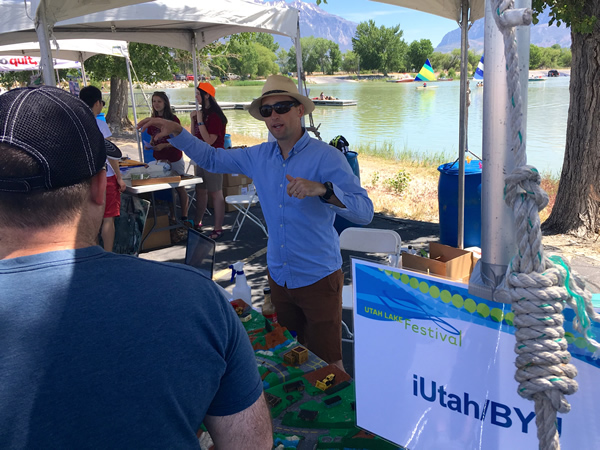
July 20, 2017
Undergraduate Student Research to Sustain Utah's Water Future
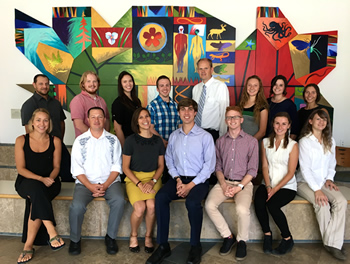
The iFellows program is an 11-week research experience program for undergraduates. For the past five years, a large number of students apply in early spring from universities across Utah for the opportunity to spend the summer doing water research with faculty members from Utah State University, the University of Utah, and Brigham Young University.
This year, 15 undergraduates from across the state were selected, and have spent the last 10 weeks doing water research in connection with the iUTAH project. Their experiences included fieldwork, research, and analysis. Working with faculty and student mentors, these students learned about the challenges and solutions needed to sustain the state’s water supply over the next few decades.
The iFellow students have chronicled their work online in weekly recaps. Below is a list of this year’s iFellow undergraduate researchers along with hometown, current institution, and iUTAH faculty mentor:
- Chase Beyer - Morton, WA, Westminster College, with Ryan Dupont, USU & Joan McLean, USU
- Lindsay Capito - Kamas, UT, Utah State University, with Sarah Null, USU
- Maggie England - Blackfoot, ID, Weber State University, with Michelle Baker, USU
- Christian Ford - Sandy, UT, Salt Lake Community College, with David Rosenberg, USU
- Michael Fowles - Ogden, UT, Weber State University, with Sarah Null, USU
- Emily Jorgensen - Alpine, UT, Brigham Young University, with Mark Brunson, USU
- Andrew Luymes - Pasadena, CA, Brigham Young University, with Greg Carling, BYU
- Rosanise Odell - Salt Lake City, UT, Westminster College, with William Anderegg, UU
- Gabrielle Regenhardt - Honolulu, HI, University of Utah, with Brenda Bowen, UU
- Agatha Roese - Kailua, HI, Utah State University - Eastern-Price, with Zach Aanderud, BYU
- Eric Shipp - San Francisco, CA, Brigham Young University, with Zach Aanderud, BYU
- Jared Stewart - Millcreek, UT, University of Utah, with Peter Howe, USU
- Arin Towns - Virginia Beach, VA, Utah State University, with Janice Brahney & Bethany Neilson, USU
- Conor Tyson - Milpitas, CA, Utah State University, with Ryan Dupont, USU & Joan McLean, USU
- Desiree Wickwar - Fort Collins, CO, Westminster College, with Michelle Baker, USU
“We have a great group of engaged and eager iFellows this summer,” says Ellen Eiriksson, iUTAH Education, Outreach and Diversity Coordinator. “ In addition to building and expanding skills in research and data analysis throughout their time in the program, our hope is that iFellows become stronger science communicators.”
In addition to posting weekly updates on their research experience, each student develops multiple research products to present. Students will present their findings individually during a conference on the University of Utah campus, on Wed. July 26.
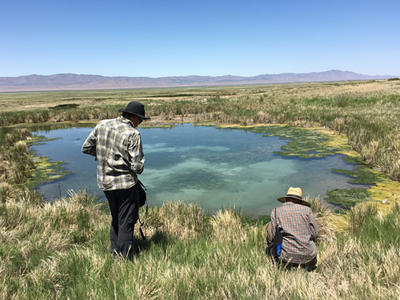
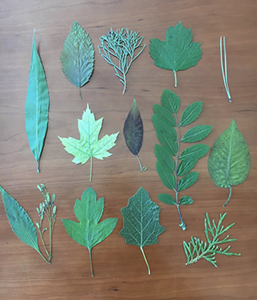
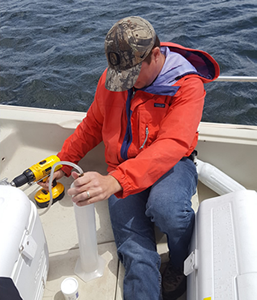
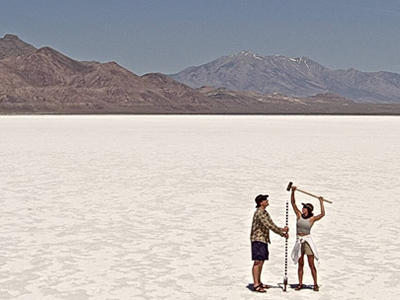
May 3, 2017
Climate Change Book Initiates Discussion
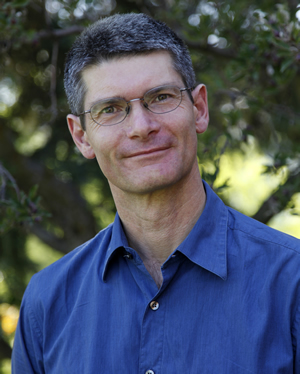
iUTAH researcher Dan Bedford was featured in a recent news story titled “Weber State professors respond to climate misinformation spun by recent book.” The article appeared in the April 24 edition of the Standard Examiner. Bedford was one of three faculty members asked to respond to a book questioning the scientific consensus on climate change. Here’s a short excerpt below:
“The book, titled “Why Scientists Disagree About Global Warming,” was published by the Heartland Institute. It claims what its title suggests, despite the fact that 90 to 100 percent of climate scientists agree climate change is real, human-caused and warming the planet at an alarming rate. The Heartland Institute is a nonprofit think tank with funding ties to fossil fuel industries…. The book attempts to debunk studies finding consensus among scientists about human-caused climate change and discredit findings by the Intergovernmental Panel on Climate Change, or IPCC.
Dan Bedford, a geography professor at Weber State, also received a copy of the Heartland Institute book. ‘My reaction to seeing this book is rather mixed,’ he said. ‘On the one hand, the whole idea of disseminating misinformation on a large scale about any scientific topic … that’s fundamentally problematic. I was upset about that.’ ”
April 24, 2017
Former iFellow Kari Norman receives prestigious NSF fellowship
Kari Norman was one of eight Utah State University scholars selected for a 2017 National Science Foundation Graduate Research Fellowship. In 2013, Norman participated in iUTAH’s iFellows program, which places undergraduate students in the laboratories of iUTAH project scientists to gain first-hand research experience. She worked directly with iUTAH mentor Sarah Null, of USU, during her 11-week with the program.
While at USU, Norman also worked on biodiversity maps of bird species in North America with the Undergraduate Research Fellow program in USU’s Office of Research and Graduate Studies. She said of her experience working on the biodiversity data that maps “inform both research and governmental organizations about where the most important areas are to conserve. We want to conserve the areas with the highest number of species.”
Norman, a 2016 graduate in mathematics, statistics and wildland resources, studied the effects of climate change on Uinta ground squirrels with USU Wildland Resources faculty mentor Lise Aubry. She is currently a doctoral student at University of California, Berkeley in the Environmental Science, Policy and Management department, and is interested in how people make conservation decisions; specifically the metrics used to determine places most important to conserve and how those metrics change over space and time.
Press: Utah State Today | Deseret News
